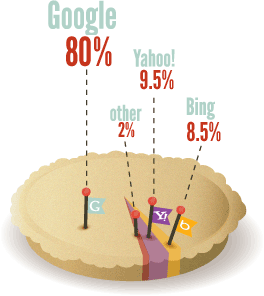85% of people perform a search before they make a purchase. Search engine optimization is about bringing those people to your website so that they'll make that purchase with your business. The keywords that they search for are part of what determines whether they end up at your website. Incorporating relevant long-tail keywords into your SEO can bring highly-interested customers to your website.
The best way to understand long-tail keywords is to compare them to short-tail keywords. When potential customers pull up their search engine of choice, sometimes they may search for something in general terms, like restaurants. This is a short-tail keyword. A more detailed search, like vegetarian restaurants in Long Beach, is an example of long-tail keywords.
Long-tail keywords have been a part of SEO for quite a while now, but some recent changes by the major search engines have made them increasingly relevant. Perhaps following in the footsteps of Siri, search engines are increasingly looking to answer specific questions. More and more people are asking for things like, "What's the closest children's shoe store to me?" And mobile users are searching for businesses in their immediate area while they're out shopping. The combination of detailed questions and location information have made long-tail keywords more important than ever.
Because long-tail keywords are specific, there are fewer businesses competing for those top search result spots. So the vegetarian restaurant in Long Beach doesn't have to worry about the big chain restaurants or steak houses. Using SEO, it can gain a big advantage over its closest competitors: other vegetarian restaurants in the area.
One major reason to focus on long-tail keywords is that, when done correctly, they more frequently lead to purchases from customers. A person who performs a more detailed search is closer to making a purchase, so getting that person to your site is more beneficial than a site visit from someone doing a general search. And if you can bring a customer who is specifically looking for a Thai restaurant in Long Beach to your restaurant's website, you've come close to winning the battle. Mobile searches for stores in the same area as the smartphone user also offer similar, high-return opportunities for businesses.
Needless to say, it's also very important that the long-tail keywords your business is using actually apply to what you do. You don't want to pull in people who are searching for something else, because they're much less likely to be interested in your business and you may even irritate them. Most importantly, you don't want search engines categorizing the long-tail keywords you've seeded as spam. This will only cause your search results rankings to plummet, and it can take time for the search engines remove the spam label from your links.
Professional SEO from BSG can build up your business's search results rankings over time. We have experience adding the content, reviews, social media, and blogs that will lead to a boost in your rankings. And we know which short- and long-tail keywords are popular and relevant to your business. The ethical SEO supplied by BSG offers improvements that will last, because those improvements are caused by what search engines and consumers are looking for: high-quality, relevant content. So contact BSG to begin improving your search result rankings.
source:- http://www.choosebsg.com/articles/index.php/focusing-on-longtail-keywords-attract-customers-choose-bsg














